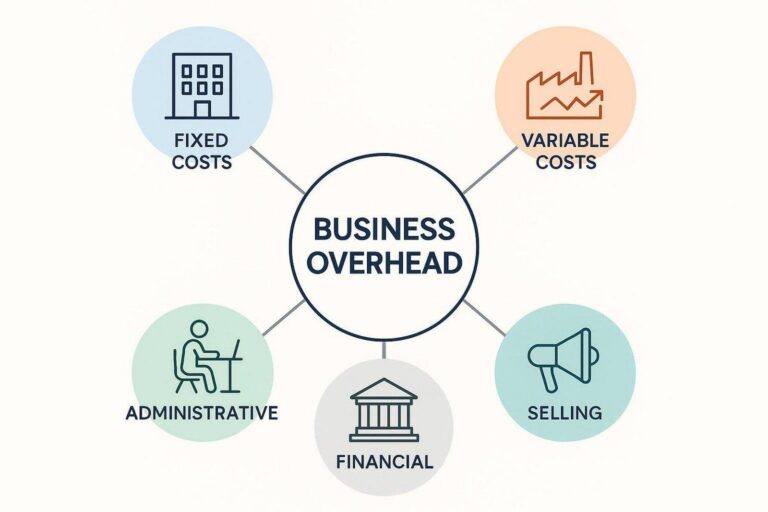In the food industry, overhead costs include the fixed and ongoing expenses that keep your restaurant running such as rent, utilities, insurance, administrative salaries, equipment maintenance, and marketing. These costs don’t directly produce sales but eat into your profits if left unchecked.
Restaurants are especially sensitive to overhead because margins are already tight. Reducing costs the wrong way, such as cutting kitchen staff or switching to low-quality ingredients, can quickly backfire. The goal isn’t just to spend less; it’s to spend smarter, ensuring every dollar supports fast service and a great dining experience. Even small efficiency improvements, like training kitchen staff to save deep fry oil, can make a noticeable difference in your bottom line without affecting food quality.
How Overhead Impacts Profit and Cash Flow
Every extra dollar spent on overhead is one less dollar in profit. When these costs grow faster than your sales, even a full dining room might not be enough to stay profitable.
By controlling overhead, you free up cash for things that matter, such as upgrading kitchen tools, improving menu items, or investing in staff training. Regularly reviewing financial reports helps you identify wasteful spending and redirect funds toward improvements that actually grow your business.
The Danger of Cutting Too Deep
Cost-cutting in restaurants can easily go too far. For example:
- Reducing prep cooks during dinner rush leads to longer wait times.
- Skipping staff training results in inconsistent service.
- Choosing cheap ingredients or unreliable suppliers can hurt food quality.
Short-term savings can lead to long-term losses through poor reviews, customer complaints, and higher staff turnover. The best cuts are the ones that save money without touching your guests’ experience.
The Benefits of Efficient Overhead Management
Restaurants that control overhead effectively can:
- Offer competitive pricing without hurting profits.
- Improve service speed and consistency.
- Invest in better kitchen tools or decor.
- Create a happier, less stressed work environment.
An efficient restaurant doesn’t just save money; it runs smoother, serves faster, and leaves a stronger impression on customers.
How to Identify and Measure Restaurant Overhead
Before cutting costs, you need to know exactly where your money goes. Review your profit and loss statement (P&L) and categorize all expenses.
Common Overhead Categories in Restaurants
- Fixed Costs: Rent, insurance, management salaries.
- Variable Costs: Food ingredients, seasonal labor, utilities.
- Semi-Variable Costs: Salaries with bonuses or commissions.
- Operational Overhead: Kitchen maintenance, cleaning supplies, uniforms.
- Administrative Overhead: Office tools, accounting, reservations software.
- Selling Overhead: Ads, delivery app fees, loyalty programs.
- Financial Overhead: Bank fees, loan interest, accounting services.
Once you have this breakdown, identify where you might be overspending.
Calculating Overhead Rate and Setting Targets
Use this formula to understand your current position:
Monthly Overhead ÷ Monthly Sales x 100 = Overhead Rate (%)
For example, if your restaurant earns $100,000 in a month and overhead is $30,000, your overhead rate is 30%. Most restaurants aim to keep overhead between 25% and 35%. Compare your rate with industry benchmarks and revisit the numbers quarterly.
Ways to Reduce Restaurant Overhead Without Slowing Service
Here’s how you can cut unnecessary costs while keeping guests happy and tables turning fast.
1. Use Automation and Smart Tools
Digital POS systems, online reservations, and automated inventory management save time and reduce errors. Kitchen display systems (KDS) can speed up orders and reduce paper tickets.
2. Go Paperless
Digital invoices, menus, and shift schedules eliminate printing costs and storage clutter. Many restaurants save thousands a year, and it’s more eco-friendly too.
3. Audit Subscriptions and Supplier Contracts
Regularly review software subscriptions, cleaning services, and delivery app fees. Negotiate better deals or bundle services for savings.
4. Negotiate With Vendors
Loyalty counts, but so does negotiation. Ask suppliers for volume discounts or early-payment incentives. Compare pricing with competitors before renewing contracts.
5. Reduce Energy Use
Energy bills are one of the biggest overhead costs. Switch to energy-efficient kitchen equipment, use LED lighting, and schedule regular equipment maintenance. Even small changes like turning off unused fryers between rushes can add up to big savings.
Managing Your Team Without Hurting Service
Labor costs are a major part of restaurant overhead. But cutting hours or staff too aggressively often slows service and leads to burnout. The key is smarter staffing, not smaller staffing.
1. Cross-Train Employees
Train servers to host or assist in prep work. When staff can fill multiple roles, you can cover busy periods without hiring extra hands.
2. Outsource When Sensible
Outsource tasks like payroll, marketing, or accounting so your core team can focus on customers and kitchen operations.
3. Control Overtime
Use scheduling software to match shifts to demand. Track labor costs weekly to prevent costly overtime spikes.
4. Invest in Training and Retention
Happy, well-trained employees work faster and make fewer mistakes. Offer ongoing training, fair wages, and rewards for top performance. High staff retention lowers recruitment and training costs over time.
Common Mistakes to Avoid When Cutting Costs
Cutting Too Deep
Removing key kitchen or front-of-house roles during busy hours leads to longer wait times and unhappy customers.
Cheap Equipment or Ingredients
Cheaper isn’t always better. Low-quality tools break faster, and inferior ingredients damage your brand. Investing in quality kitchen equipment can actually save money over time by reducing waste and improving consistency. For example, using a restaurant oil saving device helps extend the life of cooking oil, maintain food quality, and lower overall operating costs.
Overcomplicating Tech
New systems can slow operations if staff aren’t trained properly. Always introduce tech gradually and provide full training.
What to Track to Keep Overhead Low and Service Fast
To make sure your cost-cutting strategy doesn’t hurt performance, track these key indicators:
- Table Turnover Time: Are guests waiting longer to be seated or served?
- Average Ticket Time: How long from order to plate?
- Customer Satisfaction: Use surveys and reviews to monitor service quality.
- Employee Turnover: High turnover often signals overworked or unhappy staff.
- Monthly Expense Trends: Identify rising costs early before they become problems.
Step-by-Step Plan for Restaurant Overhead Management
1. Schedule Regular Expense Reviews
Review costs quarterly. Look for:
- Rising utilities
- Duplicate subscriptions
- Vendor contracts ready for renegotiation
- Waste or inefficiencies in inventory or labor
2. Involve Your Team
Encourage staff to suggest ways to save time or reduce waste, like improving portion control or reusing cooking oil properly. Recognize and reward good ideas.
3. Test and Adjust
Implement small changes, measure results, and expand what works. This way, you improve efficiency without risking service quality.
Final Thoughts
Cutting overhead in a restaurant isn’t about slashing budgets; it’s about building smarter systems that save money and improve operations. By embracing automation, reviewing expenses regularly, training your team, and negotiating smartly, you can run a leaner restaurant that serves faster, delights customers, and stays profitable without compromising quality.





